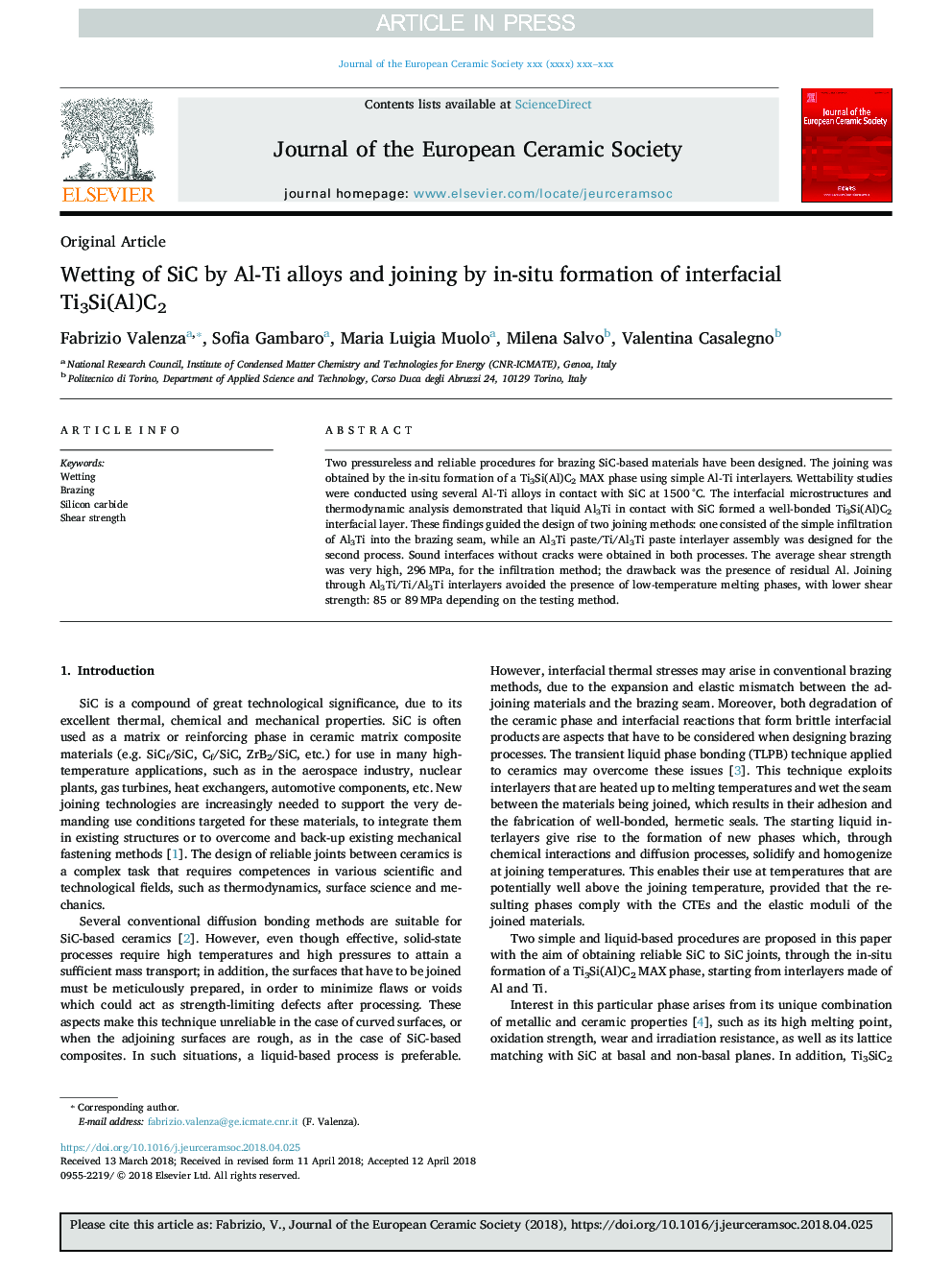| Article ID | Journal | Published Year | Pages | File Type |
|---|---|---|---|---|
| 7897893 | Journal of the European Ceramic Society | 2018 | 8 Pages |
Abstract
Two pressureless and reliable procedures for brazing SiC-based materials have been designed. The joining was obtained by the in-situ formation of a Ti3Si(Al)C2 MAX phase using simple Al-Ti interlayers. Wettability studies were conducted using several Al-Ti alloys in contact with SiC at 1500â¯Â°C. The interfacial microstructures and thermodynamic analysis demonstrated that liquid Al3Ti in contact with SiC formed a well-bonded Ti3Si(Al)C2 interfacial layer. These findings guided the design of two joining methods: one consisted of the simple infiltration of Al3Ti into the brazing seam, while an Al3Ti paste/Ti/Al3Ti paste interlayer assembly was designed for the second process. Sound interfaces without cracks were obtained in both processes. The average shear strength was very high, 296â¯MPa, for the infiltration method; the drawback was the presence of residual Al. Joining through Al3Ti/Ti/Al3Ti interlayers avoided the presence of low-temperature melting phases, with lower shear strength: 85 or 89â¯MPa depending on the testing method.
Related Topics
Physical Sciences and Engineering
Materials Science
Ceramics and Composites
Authors
Fabrizio Valenza, Sofia Gambaro, Maria Luigia Muolo, Milena Salvo, Valentina Casalegno,
